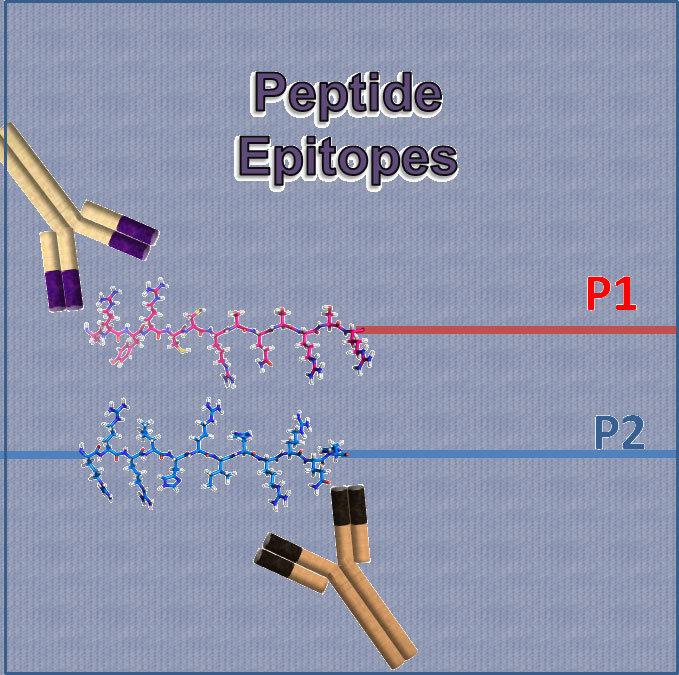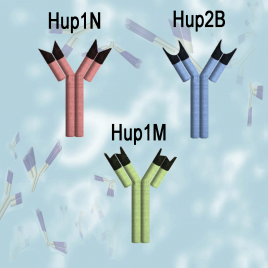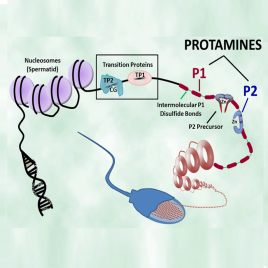Description
Our products are sold for research use only and are not intended for diagnostic or therapeutic use in humans.
The P1 epitope is recognized specifically by the Hup1N antibody; it does not bind to the Hup2B or Hup1M antibodies. It has been chemically synthesized, HPLC purified, and characterized by mass spectroscopy (95.1% purity, MW 1627.86). The P1 epitope consists of the first 13 N-terminal amino acids of P1, with the C-terminus amidated. The P1 epitope contains two cysteine residues.
The P2 epitope is recognized specifically by the Hup2B antibody; it does not bind to the Hup1N or Hup1M antibodies. It has been chemically synthesized, HPLC purified, and characterized by mass spectroscopy (99.3% purity, MW 1762.05). The P2 epitope consists of 12 amino acids within the P2 protamine molecule, with the N-terminus acetylated and the C-terminus amidated.
Reference: Immune Epitope Database and Analysis Resource (IEDB) sponsored by the National Institute of Allergy and Infectious Disease (NIAID), Reference ID 1034179
Concentration
- The peptide protamine epitopes are dissolved in 10 mM 2-mercaptoethanol and are provided at a concentration of 2.0 mg/ml.
- If you need to produce a more concentrated peptide stock solution, either of the following approaches should work well. The P1 peptide can then be redissolved in distilled water containing 10-100 mM 2-mercaptoethanol (MSH) to the desired concentration. The P2 peptide can be redissolved in water or buffer with or without the use of MSH.
- Transfer the peptide stock solution supplied (2.0 mg/ml) to a small Pyrex or equivalent tube and freeze on dry ice. Lyophilize to remove the solvent. Redissolve in desired volume.
- Transfer the peptide stock solution supplied (2.0 mg/ml) into a SpeedVac microcentrifuge tube and centrifuge the sample under vacuum in a SpeedVac centrifuge until the desired volume and concentration is reached.
Storage
These peptides can be stored as provided for up to six months at 4-6 °C. If they are to be maintained for longer periods of time, store at -20°C. Note: the P1 epitope contains two cysteine residues. If stored in the dried state, intramolecular disulfides can form over time and the peptide can become insoluble. The formation of these intermolecular disulfides can be minimized by storing the dried peptide under an inert gas, such as nitrogen or argon. If disulfides form, they can be reduced by adding concentrated 2-mercaptoethanol to the dry protein, allowing reduction of the disulfides to proceed for 30 min, and then adding water to adjust the protein and MSH concentration.



